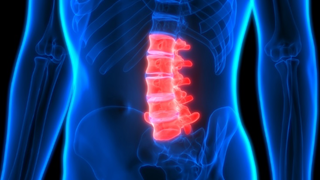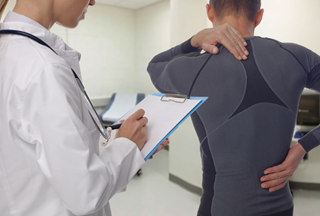Spinal Stenosis Palos Hills and Mokena

The spine consists of vertebrae and discs. Between the vertebrae and discs are spaces, and when this space is narrowed it can place pressure on the spinal cord and the nerves traveling through the spine into the arms and legs. When this happens, it is known as spinal stenosis.
Causes & Symptoms
While there are many causes for back pain, a person may be experiencing spinal stenosis if he or she is having any of the following symptoms:
- Pain in the lower back or neck
- Tingling or numbness in the lower back or neck
- Muscle weakness
- Issues with normal bladder or bowel functions
It is also possible to have spinal stenosis without any symptoms.
Spinal stenosis can occur from a number of factors including having a naturally smaller spinal canal. However, most cases of spinal stenosis are caused by something happening to physically shrink the space inside the spine. Some causes of spinal stenosis may include:
- Bone Overgrowth
- Wear and tear related to osteoarthritis
- Herniated Disks
- Spinal Injuries
- Tumors
There is a chance that when left untreated, spinal stenosis can develop into something more severe and cause lasting balance problems, numbness, weakness, incontinence and even paralysis.

Diagnosing Spinal Stenosis
Diagnosing spinal stenosis can be tricky as its symptoms are often confused with aging. It may be necessary for a patient to undergo X-rays or MRI in order to receive an accurate diagnosis. X-rays may show changes in bone structure, like bone spurs, while MRIs will create cross-sectional images of your body, depicting everything from muscles and ligaments to possible tumors.
A Common Misconception
Myth: Surgery is the Only Solution After being diagnosed with spinal stenosis, some fear that their only option is surgery. In reality, only a few patients ever require surgery. In fact, spinal stenosis can be treated in a variety of ways, including physical therapy, steroids injections and non-surgical home care.Surgical Treatment
When alternative treatments are unsuccessful, minimally invasive spine surgery (MISS) is an option.
While surgery is a last resort, there are a number of benefits to having MISS, including minimizing tissue trauma, postoperative pain, and shorter recovery time. A little pain post-surgery is to be expected, but advances in pain management and physical therapy make post-surgery recovery a breeze.

Post-Surgery
At MidAmerica Orthopaedics, in the post-surgery phase patients will participate in a rehabilitation program made up of stretches and exercises to help safely rebuild flexibility and strength. Our goal at MidAmerica Orthopaedics is to restore our patients’ quality of life. In order to prevent future injuries, patients are also trained how to properly bend and lift.
Are you interested in a consultation? Schedule an appointment with MidAmerica Orthopaedics by calling (708) 237-7200.
Discover other treatment options and services MidAmerica Orthopaedics can offer you by visiting our website.

